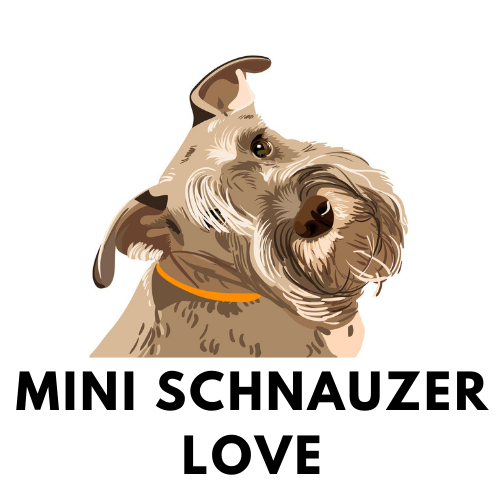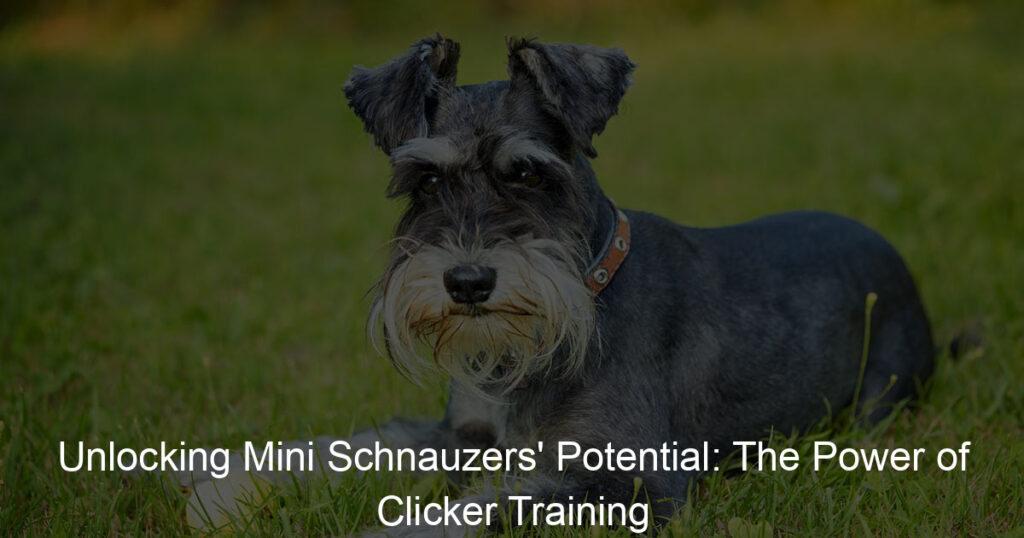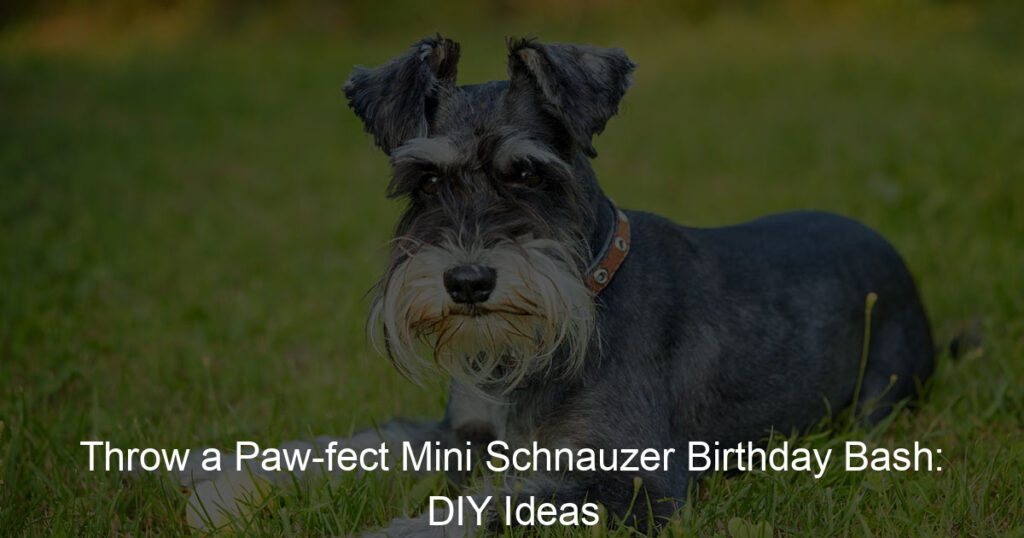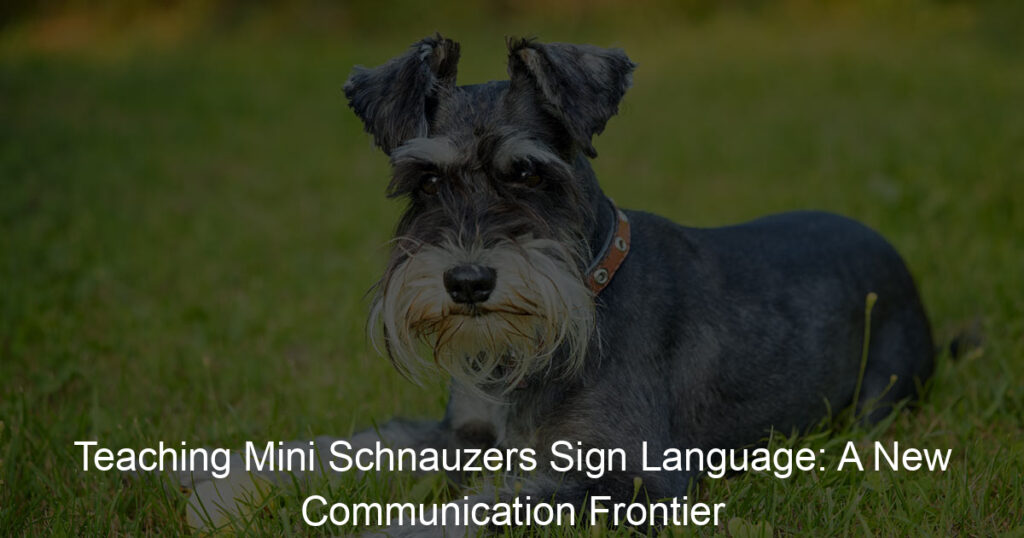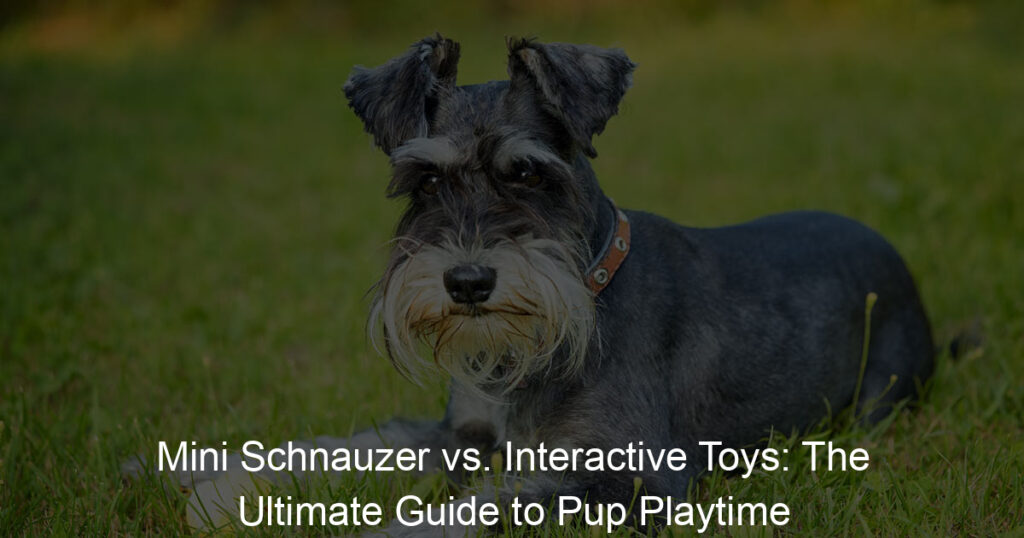
Introduction to Mini Schnauzers Training
Welcome to the world of Mini Schnauzers training. This breed, known for its intelligence and spirited personality, requires a unique approach to training. In this section, we will explore the behavior of Mini Schnauzers and the importance of effective training methods.
- Understanding Mini Schnauzers behavior
- Importance of effective training for Mini Schnauzers
Mini Schnauzers are known for their lively and spirited nature. They are intelligent dogs with a strong desire to please their owners. However, they can also be stubborn at times, which can make training a bit challenging. Understanding their behavior is the first step towards effective training.
Training is not just about teaching your Mini Schnauzer to obey commands. It’s about building a strong bond with your pet and ensuring they are well-behaved and happy. Effective training can help curb unwanted behaviors, improve social skills, and even enhance your dog’s mental health. Remember, a well-trained Mini Schnauzer is a happy Mini Schnauzer.
As we delve deeper into the world of Mini Schnauzers training, we will explore various training methods, tools, and case studies to help you unlock your Mini Schnauzer’s potential. Stay tuned!
Exploring Dog Training Methods
Training your dog is an important part of pet ownership. It’s not just about teaching them tricks, but also about helping them understand how to behave in different situations. Let’s dive into some traditional methods used in dog training.
Traditional Dog Training Methods
Traditional dog training methods have been used for many years and are still popular today. They are based on the principles of command and reward. Let’s take a closer look at these methods.
- Command-based training
- Reward-based training
Command-based training is a method that uses specific commands to get your dog to behave in a certain way. For example, you might use the command “sit” to get your dog to sit down. This method requires consistency and patience, as you need to repeat the command until your dog understands and responds to it. It’s important to use a firm, but kind voice when giving commands to ensure your dog feels safe and not threatened.
Reward-based training, also known as positive reinforcement, involves giving your dog a reward when they perform a desired behavior. The reward could be a treat, a toy, or praise. The idea is to make the dog associate the behavior with something positive, so they are more likely to repeat it in the future. For example, if you ask your dog to sit and they do, you would immediately reward them. This method is highly effective and can strengthen the bond between you and your dog.
Both command-based and reward-based training methods have their advantages. Command-based training can be very effective for teaching basic obedience, while reward-based training can be great for encouraging good behavior. It’s important to choose the method that works best for you and your dog.
Modern Dog Training Methods
As we continue to learn more about our furry friends, new and innovative methods of training have emerged. These modern techniques are designed to make training more effective and enjoyable for both the dog and the owner. Let’s explore two of these modern methods: Clicker training and Electronic training.
- Clicker Training
- Electronic Training
Clicker training is a reward-based method that uses a small device that makes a distinct ‘click’ sound. The clicker is used to mark the exact moment the dog performs the desired behavior. The click is then followed by a reward, usually a tasty treat. This method is based on the science of how dogs learn and is known for its effectiveness and kindness.
Here’s how it works: Say you want your dog to sit. The moment your dog’s bottom touches the ground, you click and then immediately give a treat. Soon, your dog will associate the click with doing something right and earning a reward.
Clicker training is not only effective but also fun for the dog. It turns training into a game and encourages dogs to think and learn. It’s a great way to strengthen the bond between you and your pet.
Electronic training, also known as e-training, involves the use of electronic devices to aid in training. One common device is the electronic collar, which can emit a sound, vibration, or a mild electric shock. The trainer uses a remote control to trigger the device at the exact moment the dog exhibits unwanted behavior.
It’s important to note that electronic training should be used with caution and under the guidance of a professional. When used correctly, it can be a powerful tool for correcting serious behavior issues. However, misuse can lead to fear, anxiety, and aggression in dogs.
Remember, the goal of training is not just to have a well-behaved dog, but also to foster a strong, positive relationship with your pet. Always choose a method that is kind and respectful to your dog.
Understanding Clicker Training
Clicker training is a popular method used in dog training that relies on positive reinforcement. Let’s dive deeper into understanding this technique and its effectiveness.
- Concept of Clicker Training
- Clicker Training Effectiveness
Clicker training is a method that uses a distinct sound, a click, to tell a dog when they’ve done something right. The clicker is a small handheld device that makes a ‘click’ sound when pressed. The sound of the click is used to mark the exact moment the dog performs the desired behavior. After the click, the dog is rewarded with something they love, like a treat or a toy. This way, the dog learns to associate the click with a reward and understands that the behavior they just performed earns them a treat.
Clicker training is highly effective because it clearly communicates with your dog what behavior is being rewarded. It’s a positive and fun method for both the dog and the trainer. The clicker’s sound is unique and consistent, which helps the dog understand and remember the behavior that’s being rewarded. Studies have shown that dogs trained using the clicker method respond to commands faster and retain training longer than dogs trained using other methods. It’s a gentle and effective way to train your dog, regardless of their age or breed.
In conclusion, clicker training is a powerful tool in dog training. It’s a simple concept that yields significant results. It’s all about communication, consistency, and positive reinforcement. With patience and practice, you can successfully train your dog using this method.
Clicker Training for Mini Schnauzers
Training your Mini Schnauzer can be a rewarding experience, especially when you use effective methods like clicker training. This technique, which uses a small handheld device that emits a distinct ‘click’ sound, can significantly enhance your dog’s training sessions and improve their obedience levels.
Benefits of Clicker Training for Mini Schnauzers
Clicker training offers several benefits that can make your Mini Schnauzer’s training sessions more productive and enjoyable. Let’s explore some of these benefits in detail:
- Enhancing dog training sessions
Clicker training can make your dog training sessions more engaging and effective. The distinct ‘click’ sound serves as a clear signal to your Mini Schnauzer that they’ve done something right, which can boost their confidence and motivation to learn. According to a study by the University of North Texas, dogs trained with a clicker showed a 33% faster learning rate compared to those trained with verbal cues.
- Improving Mini Schnauzers obedience training
Clicker training can also significantly improve your Mini Schnauzer’s obedience training. The ‘click’ sound serves as a marker that precisely identifies the desired behavior, making it easier for your dog to understand what you expect from them. This can lead to faster learning and better obedience. A study published in the Journal of Applied Animal Behaviour Science found that dogs trained with a clicker showed higher obedience levels compared to those trained with traditional methods.
In conclusion, clicker training can be a powerful tool in your Mini Schnauzer’s training regimen. Not only does it enhance the training sessions, but it also improves your dog’s obedience, making your training efforts more rewarding and successful.
Clicker Training Techniques
Clicker training is a powerful method for shaping your Mini Schnauzer’s behavior. It’s a technique that uses a sound, a click, to tell your dog when they’ve done something right. The clicker is a small plastic box with a metal strip that makes a distinct sound when pressed. Let’s explore the basic and advanced techniques of clicker training.
- Basic Clicker Training Techniques
- Charging the Clicker: This is the initial step where you make your dog associate the click sound with a reward. You click and give a treat immediately, repeating this process several times.
- Capturing: Here, you wait for your dog to perform a desired behavior naturally, then click and treat. For example, if your dog sits, you click and give a treat.
- Luring: In this technique, you use a treat or a toy to guide your dog into a specific position or action. Once they follow, you click and reward.
- Advanced Clicker Training Techniques
- Targeting: This technique involves teaching your dog to touch or move towards a specific object when asked. You can start with your hand as the target, clicking and rewarding each time your dog touches your hand with their nose.
- Sequencing: This is about teaching your dog to perform a series of actions in a specific order. For example, you can train your dog to sit, lie down, and then roll over, clicking and treating after each step.
- Shaping: This involves gradually training your dog to perform a complex behavior by rewarding them for small steps towards the final goal. For example, if you want to teach your dog to fetch, you can start by rewarding them for looking at the object, then moving towards it, and so on.
These are the foundational steps for successful clicker training:
Remember, timing is crucial in clicker training. The click needs to happen the moment your dog does the right thing.
Once your Mini Schnauzer has mastered the basics, you can move on to more complex tasks:
Advanced techniques require patience and consistency. But with time, your Mini Schnauzer will be able to perform impressive tricks and follow complex commands.
Clicker training can be a fun and effective way to train your Mini Schnauzer. Remember, the key to success is patience, consistency, and positive reinforcement. Happy training!
Case Studies: Success of Clicker Training with Mini Schnauzers
Let’s delve into real-life examples of how clicker training has positively impacted Mini Schnauzers. These case studies demonstrate the effectiveness of this method and its potential to transform your pet’s behavior.
-
Case Study 1: Transformation of a Mini Schnauzer
Meet Max, a lively Mini Schnauzer known for his stubborn streak. His owners struggled with basic obedience training, making everyday tasks a challenge. That’s when they decided to try clicker training.
Within a few weeks, Max started responding to the clicker. His owners used it to mark desirable behaviors, like sitting or staying, followed by a treat. The results were astonishing. Max’s behavior improved significantly, and he became more obedient and less destructive at home.
Max’s story is a testament to the power of clicker training. It not only helped him become more disciplined but also strengthened the bond between him and his owners.
-
Case Study 2: Enhancing Obedience in Mini Schnauzers through Clicker Training
Next, we have Bella, a Mini Schnauzer with a penchant for digging up the garden. Despite her owners’ best efforts, Bella continued her destructive habit. They turned to clicker training as a last resort.
They started by clicking and rewarding Bella whenever she was calm and not digging. Over time, Bella began to associate the clicker sound with positive reinforcement. She gradually stopped her digging habit and became more obedient.
Bella’s case shows how clicker training can effectively curb unwanted behaviors in Mini Schnauzers. It’s a clear example of how patience, consistency, and the right training method can lead to success.
In conclusion, these case studies highlight the potential of clicker training in shaping the behavior of Mini Schnauzers. It’s a gentle, effective, and rewarding method that can bring about significant changes in your pet’s behavior.
Choosing the Right Dog Training Tools
When it comes to training your Mini Schnauzer, having the right tools can make a world of difference. Let’s explore some of the most essential tools you’ll need.
- Choosing the right clicker
Clicker training is a popular method for teaching dogs new behaviors. The clicker is a small device that makes a distinct ‘click’ sound when pressed. This sound is used to mark the exact moment your dog performs a desired behavior. But not all clickers are created equal. Here are a few things to consider when choosing a clicker for your Mini Schnauzer:
- Sound: The clicker should produce a sound that is distinct but not too loud or startling for your dog.
- Size: The clicker should be small enough to hold comfortably in your hand.
- Button: The button on the clicker should be easy to press quickly.
- Other essential tools for training Mini Schnauzers
Besides a clicker, there are other tools that can be helpful in training your Mini Schnauzer. Here are a few:
- Treats: Small, tasty treats can be a great reward for your dog when they perform a desired behavior.
- Leash: A good leash is essential for keeping your dog safe and close during training sessions.
- Training Pads: These can be very helpful when house training your Mini Schnauzer.
- Interactive Toys: These toys can help keep your dog engaged and mentally stimulated.
Remember, the key to successful training is consistency, patience, and positive reinforcement. With the right tools and approach, your Mini Schnauzer will be learning new behaviors in no time!
Conclusion: Unlocking Your Mini Schnauzer’s Potential
As we wrap up our comprehensive guide on Mini Schnauzer training, it’s important to reflect on the key takeaways and how they can help you unlock your pet’s potential. Let’s summarize the main points.
- Recap of the power of clicker training: Clicker training has proven to be a highly effective method for teaching Mini Schnauzers new behaviors. It works by creating a positive association between the sound of a clicker and a reward, making your dog more likely to repeat the desired behavior. This method is not only efficient but also promotes a stronger bond between you and your pet. Remember the case studies we discussed, where Mini Schnauzers showed significant improvement in their behavior after being trained with a clicker.
- Final thoughts on Mini Schnauzers training: Training your Mini Schnauzer is not just about teaching them tricks or obedience commands. It’s about understanding their unique needs and personality, and using the right tools and techniques to help them thrive. Clicker training, when done correctly, can be a powerful tool in this process. However, patience and consistency are key. Training should be a fun and rewarding experience for both you and your Mini Schnauzer. Remember, every dog is unique and what works for one might not work for another. So, keep experimenting until you find what works best for your furry friend.
In conclusion, training your Mini Schnauzer can be a rewarding journey. It not only helps in managing their behavior but also strengthens the bond between you and your pet. So, embrace the power of clicker training and unlock your Mini Schnauzer’s full potential. Happy training!
